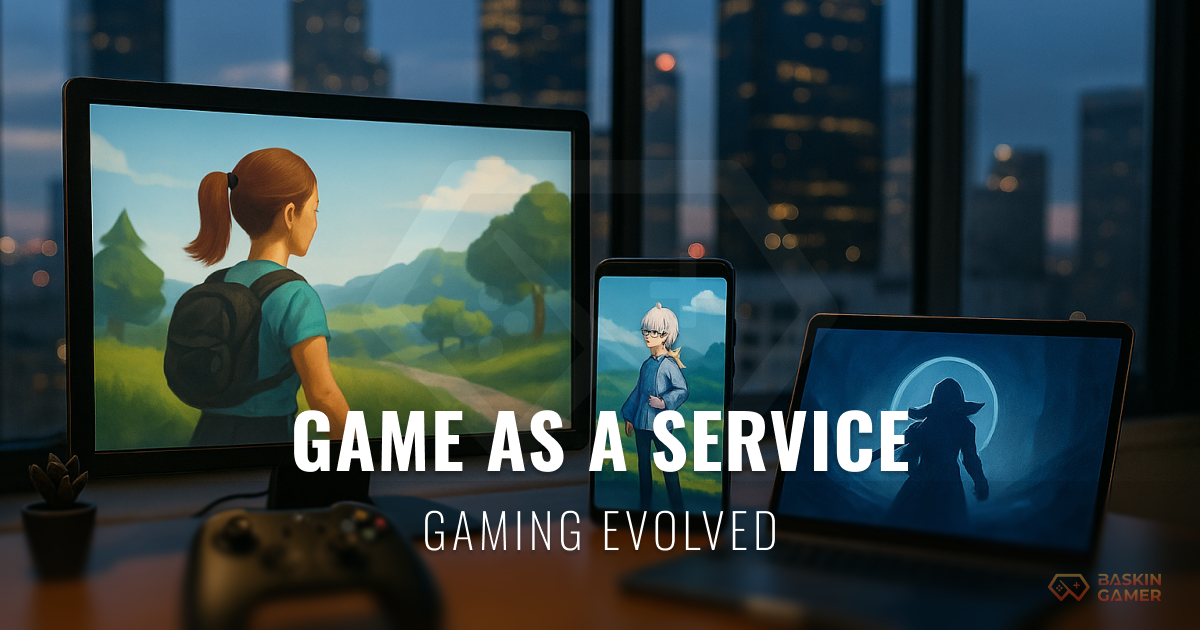Gaming is no longer a one-time purchase followed by silence. Instead, the Game as a Service (GaaS) model is redefining how we play, connect, and invest in worlds that grow over time. From live seasons to personalized content, GaaS titles are shaping an entirely new gaming era.
What Is Game as a Service?
A Game as a Service game launches as a base experience and then evolves continuously. Rather than a static finished product, GaaS worlds expand with periodic seasons, live events, and fresh content. Players stay engaged as the game breathes and changes—and developers keep innovating.
Why GaaS Thrives in 2025
Sustained Engagement
Instead of beating a game and calling it quits, players come back for regular updates. GaaS games reward long-term loyalty through evolving maps, characters, and storylines.
Community Power
These live games build communities. Shared challenges, limited-time rewards, and player feedback loops make titles feel collaborative—not transactional.
Revenue That Supports Growth
Revenue comes from battle passes, premium cosmetics, and optional expansions. That funding fuels constant updates, which boosts player retention and value.
Core Features of GaaS
Frequent Live Updates
New content drops — such as gameplay modes or cosmetic packs — arrive on a predictable cadence. That keeps the experience fresh and surprising.
Cross‑Platform Sync
Players can jump between PC, console, and mobile. Seamless cross-play and synced progress ensure flexibility and convenience.
Ethical Monetization
Fair pricing and cosmetic-only purchases are becoming standard. Many live titles respect players with transparency and optional extras—not paywalls.
What Makes GaaS Different
| Feature | Traditional Game | Game as a Service |
| Content Model | One‑off release | Constant update cycle |
| Purchase Structure | Upfront purchase only | Free or base game + paid extras |
| Player Engagement | Finite | Recurring with evolving features |
| Revenue Stream | One-time | Subscription, cosmetics, passes |
| Community Focus | Limited | Core to the experience |
Challenges to Overcome
GaaS is not without faults. Some players feel burned out by nonstop updates. Others worry about optional purchases turning into required upgrades. And since these games rely on servers, loss of connectivity can lock you out.
Nonetheless, developers that respect player time, avoid pay-to-win traps, and balance updates thoughtfully tend to thrive.
Why GaaS Matters Now
GaaS offers unmatched flexibility and ongoing value. Players who invest time find worlds that keep rewarding them. And because the model encourages open dialogue and feedback, live titles often feel more connected to their communities than ever before.
What Comes Next
Expect deeper personalization powered by AI, more community-driven storytelling, and bigger releases tied to seasonal designs. Games are fast becoming living services—not static products.
At its core, Game as a Service is changing how we game. It’s reshaping our expectations and raising the bar for interactivity, value, and connection. In 2025, GaaS isn’t just popular—it’s the standard.
Let us know your favorite ongoing game—or the one you wish would go live-service. The future of gaming is already here.
Stay tuned to Baskin Gamer as we bring you the latest updates on game news, releases, and more!

